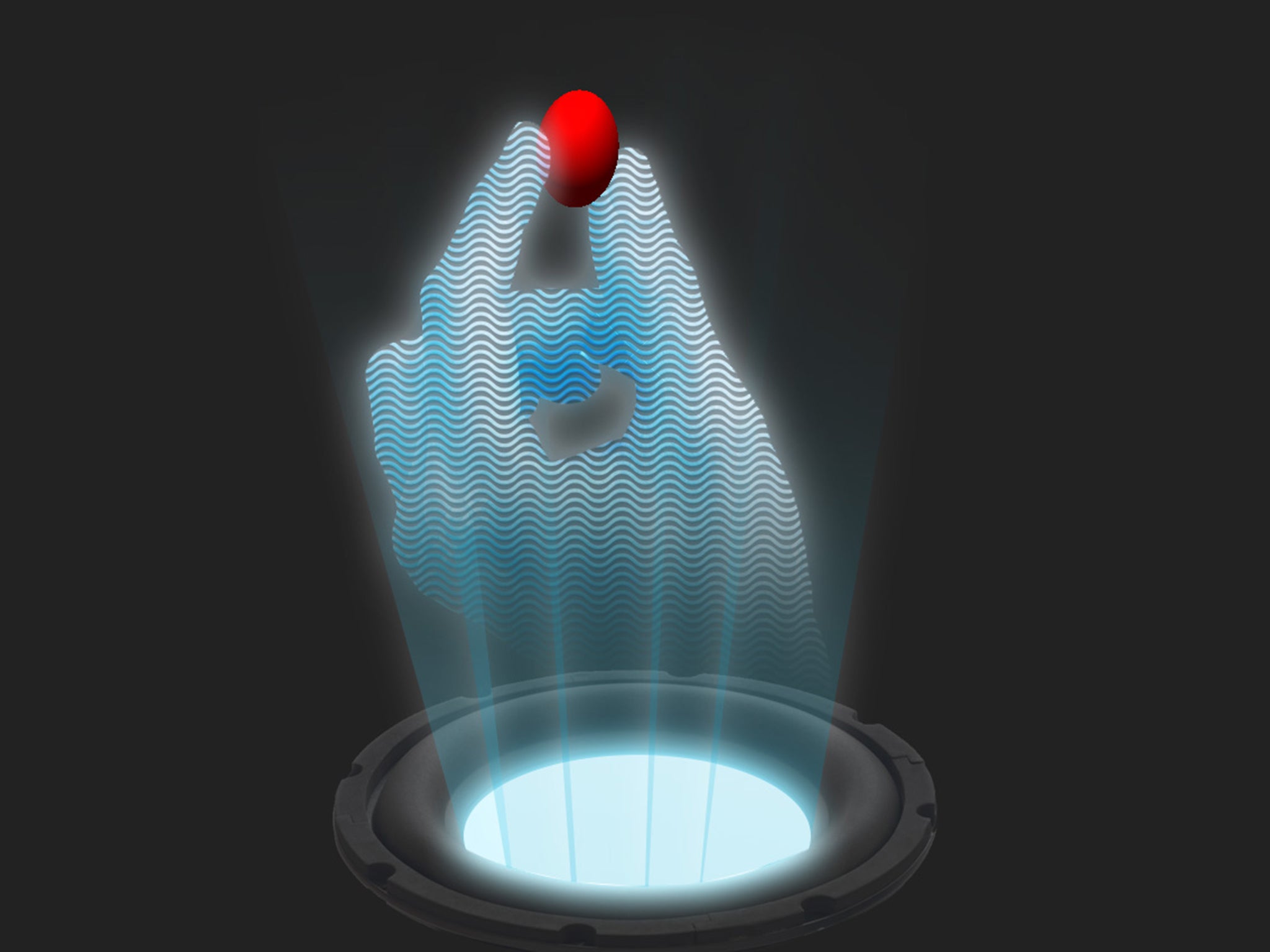Tractor beam: What is the new technology that allows people to levitate objects?
The tool isn’t big enough to be used on spaceships — but could bring massive changes to electronics and healthcare

Your support helps us to tell the story
From reproductive rights to climate change to Big Tech, The Independent is on the ground when the story is developing. Whether it's investigating the financials of Elon Musk's pro-Trump PAC or producing our latest documentary, 'The A Word', which shines a light on the American women fighting for reproductive rights, we know how important it is to parse out the facts from the messaging.
At such a critical moment in US history, we need reporters on the ground. Your donation allows us to keep sending journalists to speak to both sides of the story.
The Independent is trusted by Americans across the entire political spectrum. And unlike many other quality news outlets, we choose not to lock Americans out of our reporting and analysis with paywalls. We believe quality journalism should be available to everyone, paid for by those who can afford it.
Your support makes all the difference.Scientists have made a huge step towards one of the most fantastical inventions in science fiction: a tractor beam. But what is a tractor beam?
In short, the technology allows people to move and levitate objects without ever touching them. A number of different ways of doing so have been proposed — including lasers, sound and never-before-imagined physics.
The new example uses the physical vibrations of soundwaves to move objects: allowing them to be picked up and controlled.
The technology was first made famous in sci-fi, where it was used by both Darth Vader’s Death Star and Captain Kirk’s Starship Enterprise. But the new model is nowhere near on the scale of those, and can only lift tiny objects.
What can it control?
At the moment, the technology has only been used to control a particle up to 4mm in diameter.
But scientists hope that they can scale that up to be even larger, controlling bigger things. Scientists are now working towards something the size of a football.
What will it be used for?
But its small scale is important to one of its most significant uses: moving tiny things around, without touching and disturbing them.
Possible applications include moving and assembling delicate electronic components or transporting drug capsules or micro-sized surgical instruments through living tissue and cell.
"Sound waves can travel through water and human tissue - that is how ultrasound imaging works,” said PhD student and lead author Asier Marzo. "Our objective is neither to destroy nor to image, but to manipulate things inside our body such as drug capsules, surgical instruments, kidney stones or clots."
How does it work?
The tractor beam works by surrounding an object with high-pitched, high-intensity sound waves to trap it within an acoustic force field.
Tiny objects can be lifted into the air, moved up-and-down or from side-to-side, and rotated simply by adjusting the output of 64 miniature loudspeakers.
Different shaped force fields made of sound were found to function as tractor beams, the scientists reported in the journal Nature Communications.
One resembled a pair of fingers or tweezers, another took the form of a swirling "vortex", and a third enclosed the object in a "cage".
Additional reporting by Press Association
Join our commenting forum
Join thought-provoking conversations, follow other Independent readers and see their replies
Comments